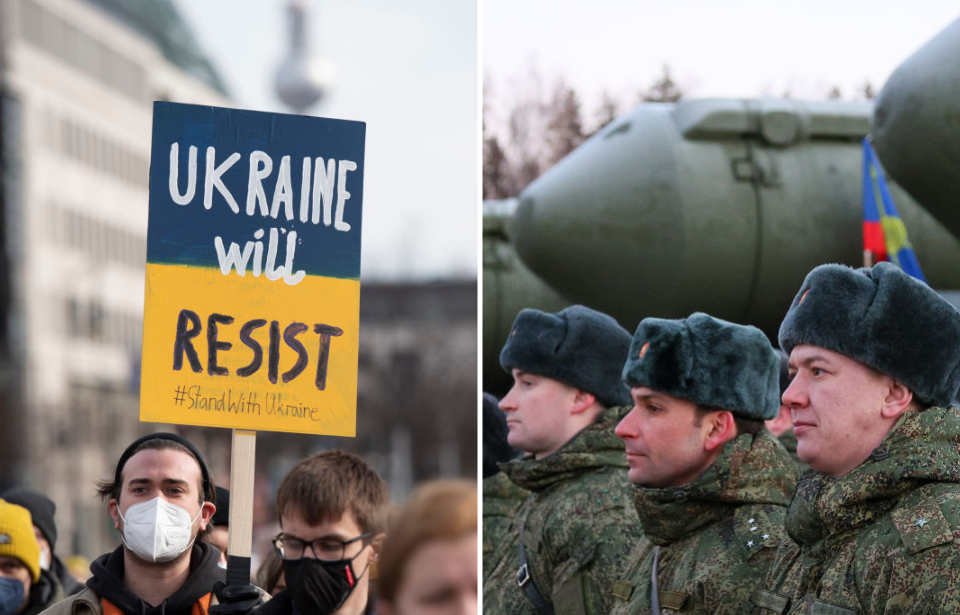The history of Russia-Ukraine relations is a contentious one. The pair’s relationship dates back long before the creation of the Soviet Union and has continued after its dissolution, and throughout it all there has been little peace. Here’s a detailed look at the history between the two countries.
Ukraine’s unrest up until the creation of the USSR
Over the course of centuries, Ukraine has been fighting for independence while controlled by different groups. This began during the 10th century when various tribes came together to form Kyivan Rus‘, a governing system based near modern-day Kyiv but, as expected for the time, plagued with feudal conflict. Approximately 300 years later, Kyivan Rus’ was invaded by the Mongols.
Upon the Mongol invasion, the two nation’s cultural myths split. Part of the Kyivan Rus’ stayed in modern-day Ukraine, reforming as the Cossack Hetmanate under Mongol rule. Another section of the Kyivan Rus’ left and moved north, towards modern-day Moscow. The Kyivan Rus’ who moved north eventually established the Tsardom of Russia, while the Kyivan Rus’ who remained transformed into the Cossack Hetmanate, and eventually were overrun by the Polish and Lithuanian armies in the 16th century.
During the 17th century, war broke out between the Polish-Lithuanian Commonwealth and the Tsardom of Russia, splitting Ukraine between the east, which was controlled by Russia, and the west, which fell under Polish control. This divide existed until 1793, when the Russian Empire annexed western Ukraine, plunging the country into a century of “Russification.” For Russia, they claimed this was “reunification” of the Kyivan Rus’, but for Ukrainians, it was another subjugation.
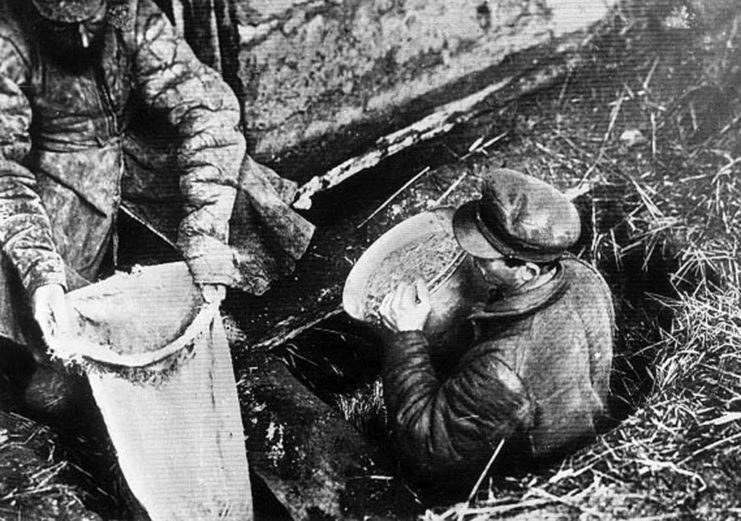
Following the start of the Russian Revolution, Ukraine became embroiled in civil war, during which it existed independently as the Ukrainian Central Rada (the Central Council of Ukraine). This lasted until 1922 when it became absorbed into the Soviet Union.
To force Ukraine’s peasants to join collective farms, Soviet leader Joseph Stalin created a manmade famine in 1932-33, killing an estimated 7.5 million Ukrainians and recognized today Holodomor. Following this, large populations of Russians were relocated to bolster up and Russify Soviet satellite states in the east.
Collapse of the Soviet Union
Between 1989 and 1990, anti-Communist protests swept across Eastern and central Europe, beginning in Poland and spreading across the Soviet bloc, and Ukraine was no exception.

By July 1990, there was a vote in favor of Ukraine’s independence and a new parliament. However, this struggled to remain legitimate in the face of Soviet pressure. Following a failed coup in Moscow in mid-1991, Ukraine’s parliament once again declared independence, which was supported by 92 percent of Ukrainians.
The USSR officially dissolved on December 26, 1991. A little less than a year later, Ukraine established relations with the North Atlantic Treaty Association (NATO).
Ukraine following the dissolution of the USSR
In 1994, with Ukraine in possession of the world’s third-largest stockpile of nuclear arms, the Budapest Memorandum was organized. Completed in partnership with the United States, the United Kingdom, and Russia, Ukraine’s government agreed to trade away its nuclear weapons in exchange for the other signatory countries respecting its “independence and sovereignty” and existing borders.

Between 1994 and 2004, President Leonid Kuchma began to transition Ukraine towards the Western, capitalist world. He didn’t run for office in 2004, instead, picking Viktor Yanukovych to be his successor. Yanukovych went up against Viktor Yushchenko, who was poisoned during the campaign process.
When the assassination attempt failed, the ruling party used voter intimidation to win a runoff election. This prompted what became known as the Orange Revolution, a series of protests and sit-ins held by Yushchenko’s supporters. This caused the previous election results to be voided, and in the second runoff, Yushchenko was elected as the country’s new president.
In 2008, Yushchenko and his Prime Minister, Yulia Tymoshenko, formally requested to join NATO. While US President George W. Bush showed support, Germany and France voiced their opposition after backlash from Russia.

On January 1, 2009, Gazprom, the state-owned Russian gas company providing natural gas to Ukraine, stopped sending gas through its pipelines, the result of failed negotiations over gas prices. This soon caused a continent-wide gas crisis, as countries in Eastern and central Europe relied on Ukraine’s pipelines to receive gas from Russia.
Tymoshenko was eventually able to negotiate a deal with Putin, albeit under intense international pressure.
Ukraine as a “neutral state”
Viktor Yanukovych was elected into office in February 2010, winning against former Prime Minister Tymoshenko. He announced Ukraine should be a “neutral state,” cooperating with both its Western allies and Russia.

In October 2011, Tymoshenko was arrested and convicted of “abuse of power” in relation to the 2009 negotiations with Russia during the gas crisis. She was sentenced to seven years in prison, prompting the West to share its concerns over the country’s potential persecution of political opponents.
Maidan Revolution
A few days before it was due, Yanukovych announced he wouldn’t sign a 2013 deal with the EU to bring free trade to Ukraine. Citing pressure from Russia, he said he would instead revive economic ties with the country. This prompted mass protests across Ukraine and calls for him to resign.
The situation escalated in late February 2014, when the violence between protestors and authorities resulted in the death of over 100 people. At the time is became the single bloodiest week since Ukraine left the Soviet Union.

Facing an impeachment vote on February 22, Yanukovych fled to Russia. Ukraine’s parliament voted to remove him from office, and in his place organized an interim government. He was also charged with the mass murder of the protestors who’d been killed during the Maidan Revolution. The interim government proceeded to announce that Tymoshenko would be released from prison and the agreement with the EU, signed.
Annexation of Crimea
Following Yanukovych fleeing Ukraine, Russia declared the country’s new government an illegal coup and set up armed personnel at checkpoints within the Crimean Peninsula. In March 2014, the Crimean government voted to secede from Ukraine and join Russia. The decision was followed by a public referendum, in which 97 percent of voters agreed with succession. However, the results are widely disputed by governing bodies.
On March 18, Russian President Vladimir Putin finalized the region’s annexation. It has never been recognized by foreign nations, with the US and its European allies imposing sanctions immediately after.
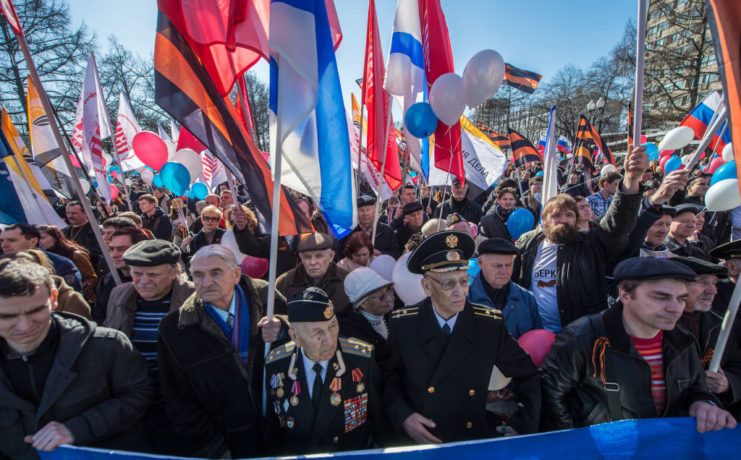
Just a month later, Moscow-backed separatists in the Donbas took control of the southeastern Ukrainian region. 40,000 Russian troops arrived at the border, and after separatists stormed government buildings in Donetsk and Luhansk, independence was declared in both regions. This began what became a years-long conflict that continues to this day.
On September 5, 2014, representatives from Ukraine, Russia, France, and Germany met in Belarus to end the violence. This resulted in the first Minsk agreement, and while successful at first, soon dissolved into fighting. The parties met again in February 2015. While a second deal was reached – the Minsk II agreement – the calls for a cease-fire failed.
Cyberattacks and the election of Volodymyr Zelenskyy
As fighting in the Donbas continued, Russia began launching cyberattacks against Ukraine. These were largely targeted at the country’s power grid, with attacks in 2016 and 2017 causing blackouts. The latter attack also affected other aspects of Ukraine’s infrastructure and its National Bank.
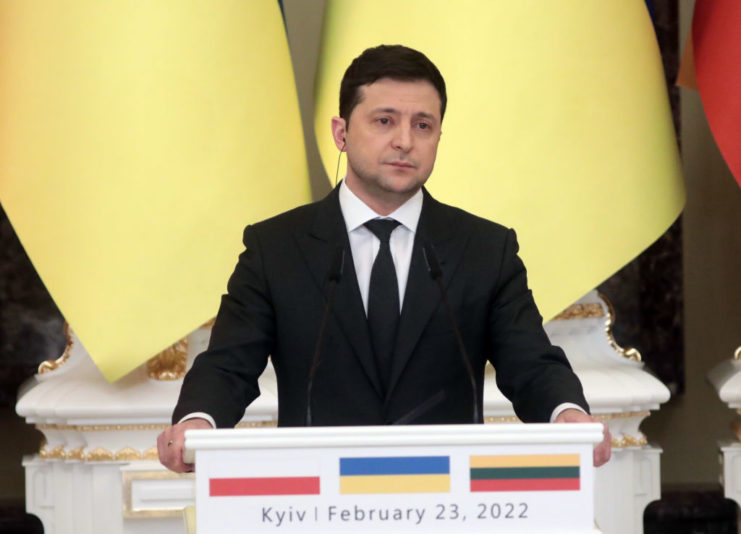
In April 2019, actor-turned-politician Volodymyr Zelenskyy was elected President, replacing pro-West politician Petro Poroshenko, who’d come into power in 2014. He campaigned on a platform of organizing peace with Russia and ending the issues in the southeast. He attempted to negotiate with the Kremlin, but his efforts were hindered by US President Donald Trump, who blocked military aid and suggested Zelenskyy work together with Putin to resolve their issues.
It was around this time that a new Ukrainian Orthodox church was formally recognized, angering Russia’s political leaders.
Tensions begin to rise in 2021
The relationship between Russia and Ukraine continued to be fragile going into 2021, with Zelenskyy imposing sanctions against Viktor Medvedchuk, an opposition leader and Russia’s most high-profile ally in Ukraine.
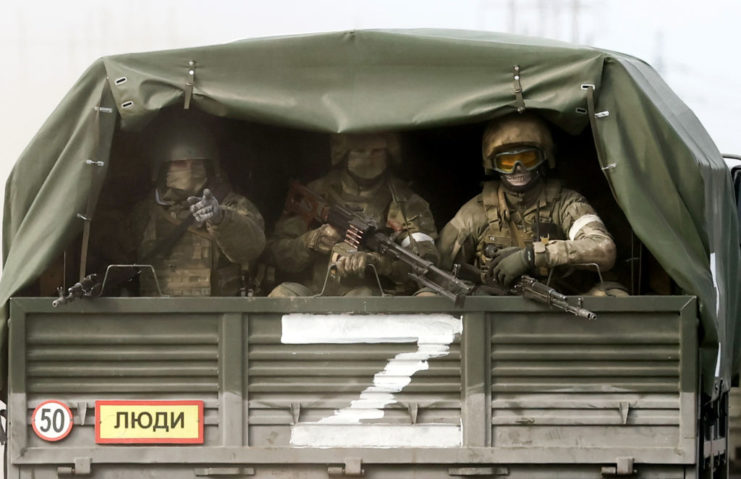
In the final months of 2021, Putin sent 100,000 troops to the border, under the guise of military exercises. While he promised to withdraw them later that month, tens of thousands remained. A month later, a Turkish Bayraktar TB2 drone was used in eastern Ukraine, prompting Putin to once again bolster Russia’s presence at the border.
By December, US President Joe Biden was discussing the possibility of a Russian invasion of Ukraine, warning Putin there would be “real costs” if such a thing occurred. Putin countered with a list of demands, including a guarantee Ukraine would never be given membership into NATO. While both NATO and the US were unable to promise this, their representatives were willing to negotiate on other issues. However, all parties failed to come to a compromise.
2022 escalation
In January 2022, Russia’s Deputy Foreign Affairs Minister Sergei Ryabkov told US officials that Russia had no plans to invade Ukraine. This was followed by joint drills between Russia and Belarus, again near the Ukraine border. By mid-February, the training drills were still occurring and the fighting in the Donbas region was intensifying.
Still, Putin denied any plans for a full-scale invasion.

On February 21, Putin formally recognized Donetsk and Luhansk’s independence and ordered troops to be deployed to those regions under the false pretenses of a “peacekeeping” mission. Biden declared the move “the beginning of a Russian invasion,” and the US, the UK and the EU placed sanctions against Russian oligarchs and banks.
Russian forces launch an assault on Ukraine
On February 24, 2022, Russia launched a full-scale assault on Ukraine, the largest on European soil since the Second World War. Putin claimed Russia couldn’t feel “safe, develop and exist” alongside the “threat” posed by a sovereign Ukraine. He added that his aim was to demilitarize the country and ensure its “de-Nazification,” which he falsley claimed had come about as a result of extremist rule following the 2014 election.
The assault began with missiles fired at airports and military bases by Russian troops. This was followed by troops and tanks entering the country from the east, north, and south, prompting Ukrainian forces to mobilize in an attempt to hold back the Russians.
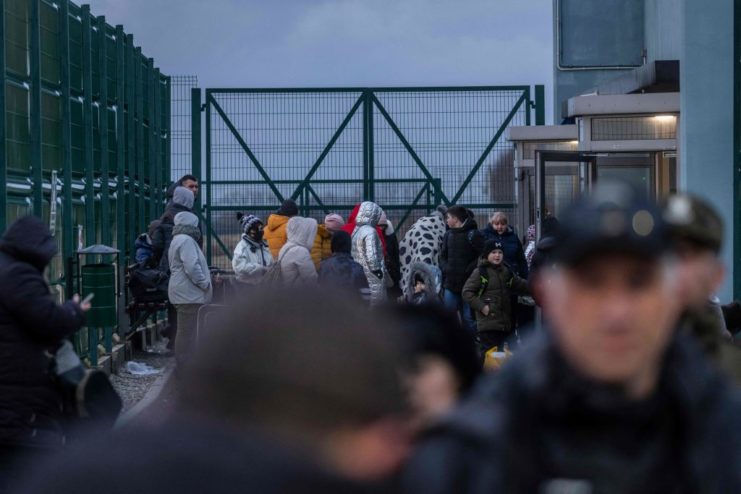
The situation is ongoing, with the majority of Ukrainian residents either fleeing the country, sheltering in subway stations, or enlisting in the military. Despite calls for him to leave Kyiv, Zelenskyy remains in the city, determined to stand by his people. What is known from history is that Ukrainians have long fought for independence and will not easily give their freedom up.
